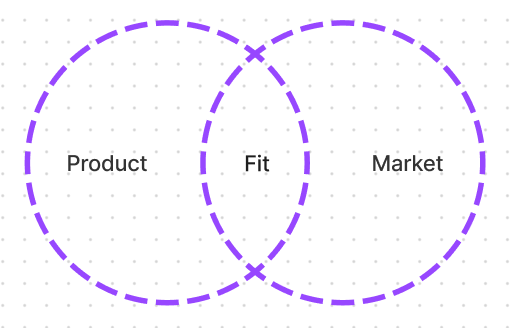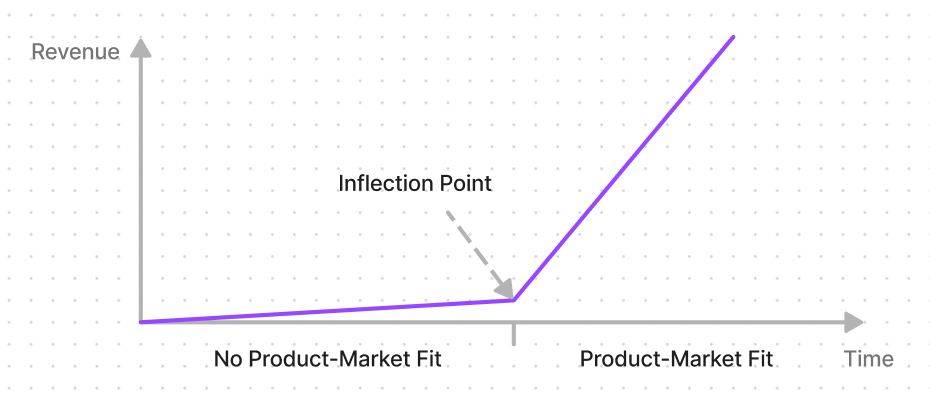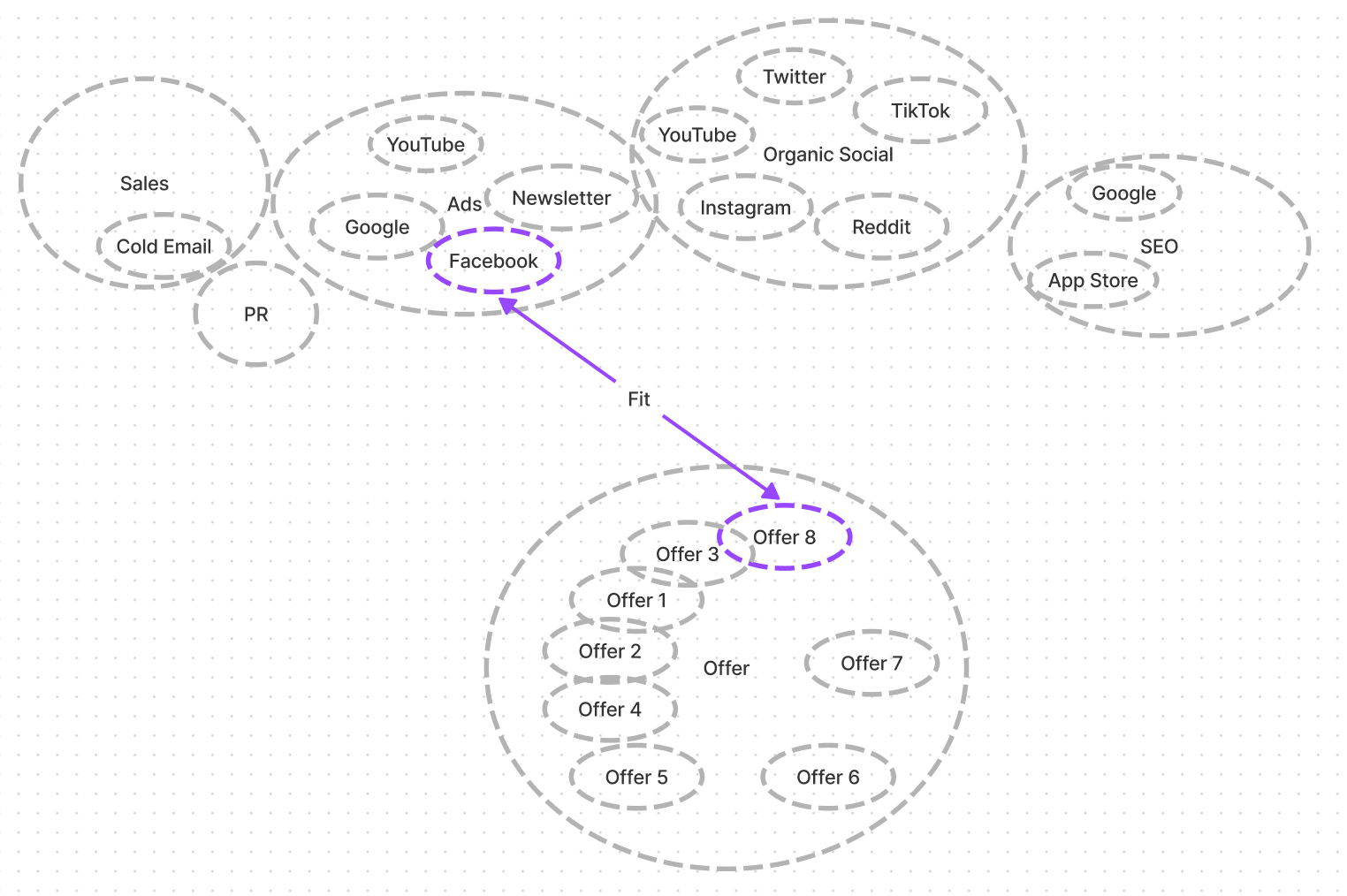People in the startup world love to emphasize just how important it is for startups to find product/market fit.
In the words of VC Marc Andreessen it’s “the only thing that matters for a new startup”.
But what does product-market fit really mean?

In short, it’s the idea that there is an inflection point when the product is so “fit” with what the market wants that everything becomes much easier. Instead of trying to figure out how to get customers, the key challenge suddenly becomes handling the demand from the incoming stream.

Sean Ellis argues that a startup has reached product/market fit when 40% of users would be “very disappointed” if the product disappeared.
Now without any doubt, these are very desirable goals. And from the perspective of venture capitalists, product-market fit really does seem like a useful concept.
Just by looking at metrics and charts like the ones above, they can divide startups into two categories: before product/market fit and after product/market fit. I can totally see how this helps with investment decisions.
But what about the founders? Is telling them to “focus on finding product/market fit” really helpful?
Let’s say you’re a founder and you can’t see an inflection point in your growth chart. You also have no idea how many of your customers would be “very disappointed” if the product disappeared since there aren’t enough of them to get a statistically meaningful answer.
So… what are you gonna do? How can you reach that magical state called product/market fit?
The concept is far too abstract to offer any kind of practical guidance.
The term product/market fit invokes the picture of founders miraculously discovering what this big diffuse thing called market wants by tweaking their product.
What really is the market? Is it people? Is it businesses? Is it something driven by a magical, invisible hand? And are we talking about the one big, universal market or individual smaller-scale markets?
What about the term product? Are we really just talking about the set of features you’re selling to customers?
But isn’t the way you present and package it oftentimes not just as if not more important?
No one needs or wants another sugary, aweful tasting softdrink. But with the right positioning you can nevertheless end up with a billion dollar business like RedBull.
And what about customer acquisition strategies? Sometimes neither your product nor your market need to change to find success. Instead, all it takes is figuring out a scalable way to acquire new customers.
The concept product/market fit is definitely abstract enough to argue that these topics somehow fit under its umbrella. But at the very least, this is far from obvious and hence potentially very misleading.
Taking the idea of hunting for product/market fit at face value, suggests focusing on tweaking your product’s feature sets or hopping from market to market; hardly an optimal strategy.
Now it’s of course always easy to criticise without proposing a proper alternative. So here’s one.
If you study how businesses got to the inflection point where growth really starts to take off it usually boils down to this: they found one scalable customer acquisition channel and crafted an offer that converts. That’s really all it takes.
This observation suggests that founders should focus on channel/offer fit.

Unlike the vague concept of product/market fit, this is not just a desirable destination but also directly suggest a path for getting there:
Iterate through customer-acquisition channels (while keeping factors like Scalability and Time to ROI in mind) and tweak your offer until you get to the magical inflection point.
Now there’s obviously still a lot of room for experimentation. You not just have to try different channels but also figure out the details. What keywords should you bid on? What profiles should you target on Facebook? What newsletters should you sponsor?
In a sense this a process for testing how different audiences (”markets”) respond to your offer. But here you’re not thinking about lofty “markets” that might only exist in your own imagination. You’re thinking about specific groups of people and a realistic ways of reaching them.
The second part of the channel/offer equation emphasizes that a product is far more than a sum of its features.
Decisions like pricing, guarantees, bundling of features into different packages, and the product’s positioning are all part of your offer and play an integral role.

Depending on the type of product you’re building, there are different value equations you can use to optimize your offer.

Finding channel/offer fit is no easier than finding product/market fit.
But while founders who focus on product/market start with a dream, those who focus on channel/offer fit start with a plan.
from Hacker News https://ift.tt/zROFICE
No comments:
Post a Comment
Note: Only a member of this blog may post a comment.